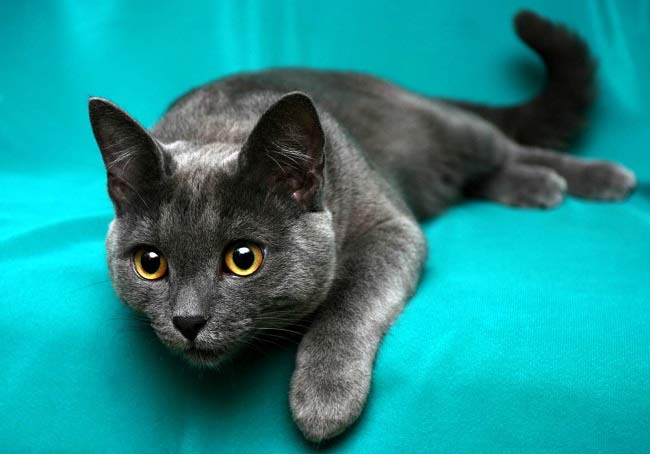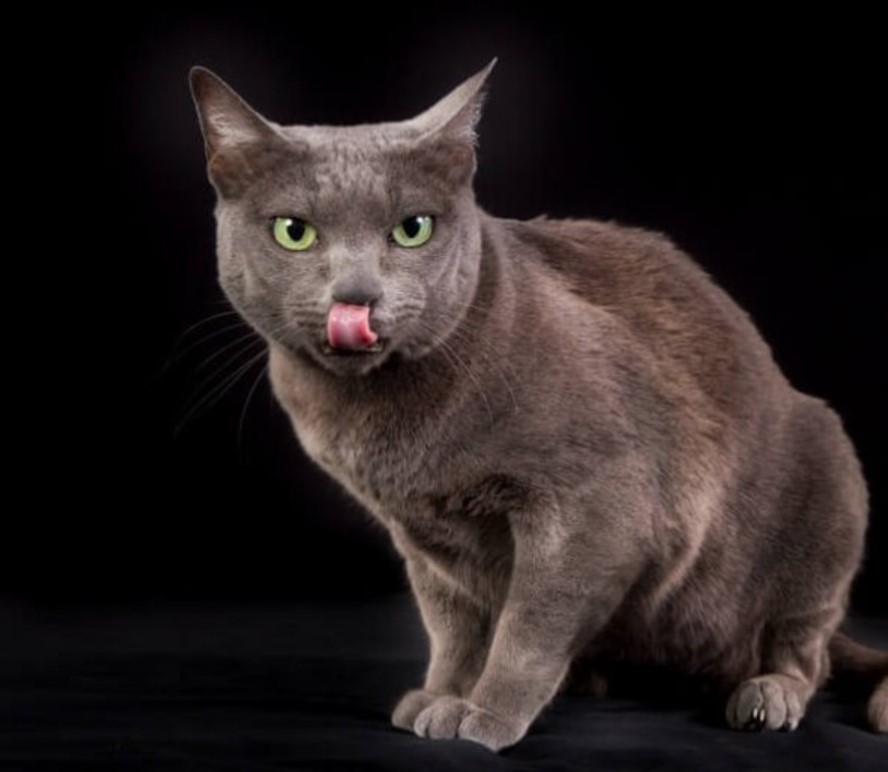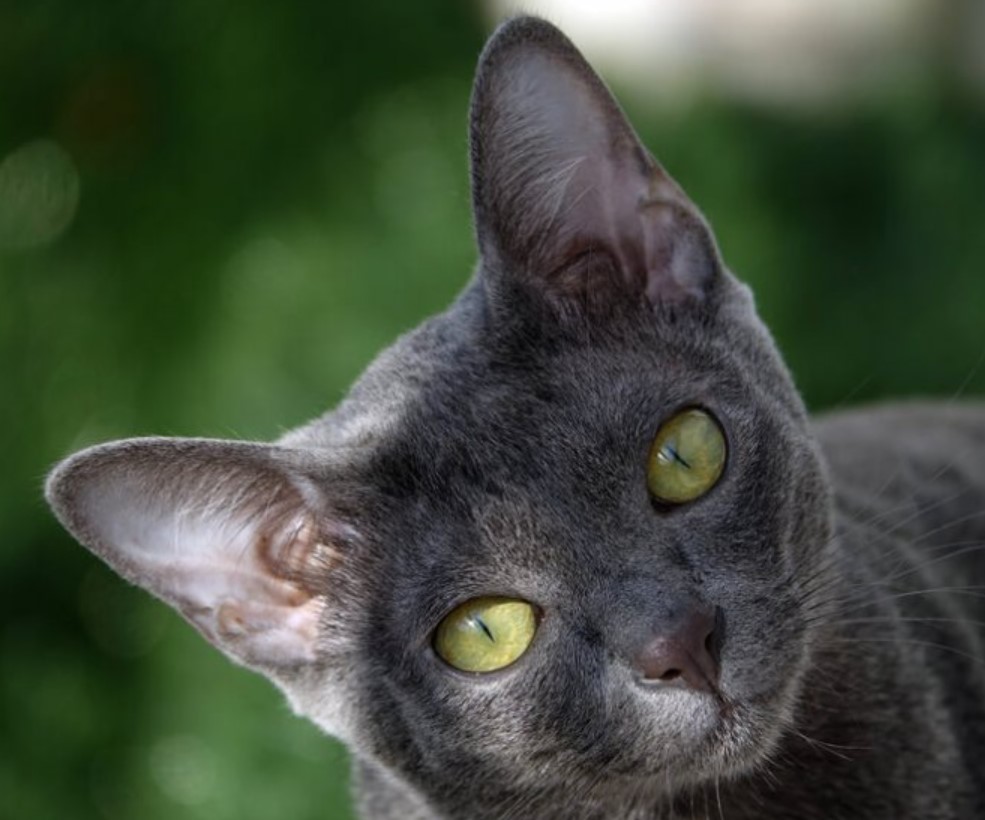The Korat is a silvery-blue beauty that has only rarely been found in Germany. Your race name is derived from the Thai province of Nakhon Ratchasima (short: Korat), where it is particularly common. In her native Thailand, she is called “Maeo Dok-Lao” – translated this means something like: “Cat the color of the clouds before a rain shower”. For the Thai people, the korat is a living symbol of luck and prosperity. For this reason they are often – as messengers of luck – a welcome gift from the bride.
Size: Medium
Weight: female / male 4.5-5.5kg / 5.5-6.5kg
Life expectancy: 12-15 years
Build: The perfect middle, medium height, medium weight, medium length and muscular
Coat colors: blue
Special features regarding appearance: Has bright green eyes
Breed type: shorthair breed
Country of origin: Thailand
Recognized cat breed by TICA, WCF, GCCF, FIFE
Typical breed diseases: Not known
The nature of the Korat

The Korat loves extensive exploration tours through all the rooms of the house, the neighbor’s garden or through meadows and forests as much as extensive pats. She is extremely curious, observant and loves to participate in everything her human pack leader does. The sociable cat does not like boredom and loneliness. She appreciates an animal companion with whom she can play and fight. She gets along with children and dogs as long as she is not treated roughly. Compared to many other cat breeds, the Korat can certainly be enthusiastic about water features. Some particularly courageous specimens even take a bath with their owner or swim a lap in the pool.
Appearance

The Korat is a medium-sized cat breed with a compact but athletic build. Their hind legs, which are long compared to their front legs, indicate great jumping power and running speed. The fur of the Korat is uniformly silver-blue, with the tips of the hair being silver-colored (tipping) – an optical silver glow is created. Animals with an intensive silver tipping are particularly in demand. Patterns, drawings, and shading are not allowed.
Another distinguishing feature is their heart-shaped face, which begins with a strong chin and is rounded off by large ears. She always has an interested and curious expression. The large, widely spaced eyes of the Korat shine in full-grown animals in a luminous peridot green. In general, this pedigree cat develops very slowly. Only at the age of 5 does she reach her full physical development.
History and origin

It is a very old cat breed that originated in Southeast Asia. The first images of the Korat can already be found in old, illustrated cat poems, the so-called Tamra Maew, which originated in Thailand around the beginning to the middle of the 19th century. If you compare the old illustrated pictures with a contemporary Korat, you can still see a clear resemblance. This is mainly due to the fact that the Korat as a breed has hardly been distorted in its appearance through targeted breeding and crossbreeding with other breeds. Even today, Korat breeding is based on a natural standard, which comes very close to the historical Korat from the old manuscripts.
Advice on keeping the Korat
The Korat closely resembles our native farm cats (European Shorthair) in behavior and needs. They love the great outdoors and should therefore be kept as outdoor cats in rural areas. She wants to be busy and cared for – and not too tight.
Health

Since the Korat as a breed has largely been spared from breeding influences and has a large, natural gene pool, it is considered to be extremely robust and have a strong immune system. However, all cats, like all humans, have the potential to develop genetic health problems. There are reports that some cats of this breed are susceptible to gangliosidosis (GM). Affected cats already show progressive disturbances of the nerve functions at the age of 3 – 6 months. This becomes clear through trembling of the head, coordination problems of the hind legs or growth retardation. Because this disease progresses quickly, affected cats rarely live past their first year of life.
A species-appropriate and balanced diet for the cat is important for a strong immune system and a long and happy cat life. Obesity is considered to be the biggest and most dangerous consequence of poor nutrition. Also important is the annual check-up at the vet and the associated vaccinations against cat cold and cat disease. Outdoor cats should also be vaccinated against rabies and feline leukemia.





























